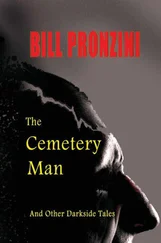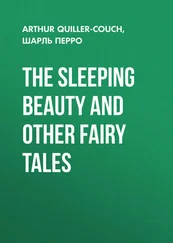Oliver Sacks - The Man Who Mistook His Wife For A Hat and Other Clinical Tales
Здесь есть возможность читать онлайн «Oliver Sacks - The Man Who Mistook His Wife For A Hat and Other Clinical Tales» весь текст электронной книги совершенно бесплатно (целиком полную версию без сокращений). В некоторых случаях можно слушать аудио, скачать через торрент в формате fb2 и присутствует краткое содержание. Город: New York, Год выпуска: 1970, ISBN: 1970, Издательство: Harper Collins, Жанр: Психология, на английском языке. Описание произведения, (предисловие) а так же отзывы посетителей доступны на портале библиотеки ЛибКат.
- Название:The Man Who Mistook His Wife For A Hat and Other Clinical Tales
- Автор:
- Издательство:Harper Collins
- Жанр:
- Год:1970
- Город:New York
- ISBN:0-06-097079-0
- Рейтинг книги:5 / 5. Голосов: 1
-
Избранное:Добавить в избранное
- Отзывы:
-
Ваша оценка:
- 100
- 1
- 2
- 3
- 4
- 5
The Man Who Mistook His Wife For A Hat and Other Clinical Tales: краткое содержание, описание и аннотация
Предлагаем к чтению аннотацию, описание, краткое содержание или предисловие (зависит от того, что написал сам автор книги «The Man Who Mistook His Wife For A Hat and Other Clinical Tales»). Если вы не нашли необходимую информацию о книге — напишите в комментариях, мы постараемся отыскать её.
The Man Who Mistook His Wife For A Hat and Other Clinical Tales — читать онлайн бесплатно полную книгу (весь текст) целиком
Ниже представлен текст книги, разбитый по страницам. Система сохранения места последней прочитанной страницы, позволяет с удобством читать онлайн бесплатно книгу «The Man Who Mistook His Wife For A Hat and Other Clinical Tales», без необходимости каждый раз заново искать на чём Вы остановились. Поставьте закладку, и сможете в любой момент перейти на страницу, на которой закончили чтение.
Интервал:
Закладка:
I showed him the cover, an unbroken expanse of Sahara dunes.
‘What do you see here?’ I asked.
‘I see a river,’ he said. ‘And a little guest-house with its terrace on the water. People are dining out on the terrace. I see coloured parasols here and there.’ He was looking, if it was ‘looking’, right off the cover into mid-air and confabulating nonexistent features, as if the absence of features in the actual picture had driven him to imagine the river and the terrace and the coloured parasols.
I must have looked aghast, but he seemed to think he had done rather well. There was a hint of a smile on his face. He also appeared to have decided that the examination was over and started to look around for his hat. He reached out his hand and took hold of his wife’s head, tried to lift it off, to put it on. He had apparently mistaken his wife for a hat! His wife looked as if she was used to such things.
I could make no sense of what had occurred in terms of conventional neurology (or neuropsychology). In some ways he seemed perfectly preserved, and in others absolutely, incomprehensibly devastated. How could he, on the one hand, mistake his wife for a hat and, on the other, function, as apparently he still did, as a teacher at the Music School?
I had to think, to see him again—and to see him in his own familiar habitat, at home.
A few days later I called on Dr P. and his wife at home, with the score of the Dichterliebe in my briefcase (I knew he liked Schumann), and a variety of odd objects for the testing of perception. Mrs P. showed me into a lofty apartment, which recalled fin-de-siecle Berlin. A magnificent old Bosendorfer stood in state in the centre of the room, and all around it were music stands, instruments, scores. . . . There were books, there were paintings, but the music was central. Dr P. came in, a little bowed, and, distracted, advanced with outstretched hand to the grandfather clock, but, hearing my voice, corrected himself, and shook hands with me. We exchanged greetings and chatted a little of current concerts and performances. Diffidently, I asked him if he would sing.
‘The Dichterliebe!’ he exclaimed. ‘But I can no longer read music. You will play them, yes?’
I said I would try. On that wonderful old piano even my playing sounded right, and Dr P. was an aged but infinitely mellow Fischer-Dieskau, combining a perfect ear and voice with the most incisive musical intelligence. It was clear that the Music School was not keeping him on out of charity.
Dr P.’s temporal lobes were obviously intact: he had a wonderful musical cortex. What, I wondered, was going on in his parietal and occipital lobes, especially in those areas where visual processing occurred? I carry the Platonic solids in my neurological kit and decided to start with these.
‘What is this?’ I asked, drawing out the first one.
‘A cube, of course.’
‘Now this?’ I asked, brandishing another.
He asked if he might examine it, which he did swiftly and systematically: ‘A dodecahedron, of course. And don’t bother with the others—I’ll get the icosahedron, too.’
Abstract shapes clearly presented no problems. What about faces? I took out a pack of cards. All of these he identified instantly, including the jacks, queens, kings, and the joker. But these, after all, are stylised designs, and it was impossible to tell whether he saw faces or merely patterns. I decided I would show him a volume of cartoons which I had in my briefcase. Here, again, for the most part, he did well. Churchill’s cigar, Schnozzle’s nose: as soon as he had picked out a key feature he could identify the face. But cartoons, again, are formal and schematic. It remained to be seen how he would do with real faces, realistically represented.
I turned on the television, keeping the sound off, and found an early Bette Davis film. A love scene was in progress. Dr P. failed to identify the actress—but this could have been because she had never entered his world. What was more striking was that he failed to identify the expressions on her face or her partner’s, though in the course of a single torrid scene these passed from sultry yearning through passion, surprise, disgust, and fury to a melting reconciliation. Dr P. could make nothing of any of this. He was very unclear as to what was going on, or who was who or even what sex they were. His comments on the scene were positively Martian.
It was just possible that some of his difficulties were associated with the unreality of a celluloid, Hollywood world; and it occurred to me that he might be more successful in identifying faces from his own life. On the walls of the apartment there were photographs of his family, his colleagues, his pupils, himself. I gathered a pile of these together and, with some misgivings, presented them to him. What had been funny, or farcical, in relation to the movie, was tragic in relation to real life. By and large, he recognised nobody: neither his family, nor his colleagues, nor his pupils, nor himself. He recognised a portrait of Einstein because he picked up the characteristic hair and moustache; and the same thing happened with one or two other people. ‘Ach, Paul!’ he said, when shown a portrait of his brother. ‘That square jaw, those big teeth— I would know Paul anywhere!’ But was it Paul he recognised, or one or two of his features, on the basis of which he could make a reasonable guess as to the subject’s identity? In the absence of obvious ‘markers’, he was utterly lost. But it was not merely the cognition, the gnosis , at fault; there was something radically wrong with the whole way he proceeded. For he approached these faces— even of those near and dear—as if they were abstract puzzles or tests. He did not relate to them, he did not behold. No face was familiar to him, seen as a ‘thou’, being just identified as a set of features, an ‘it’. Thus, there was formal, but no trace of personal, gnosis. And with this went his indifference, or blindness, to expression. A face, to us, is a person looking out—we see, as it were, the person through his persona , his face. But for Dr P. there was no persona in this sense—no outward persona , and no person within.
I had stopped at a florist on my way to his apartment and bought myself an extravagant red rose for my buttonhole. Now I removed this and handed it to him. He took it like a botanist or morphol-ogist given a specimen, not like a person given a flower.
‘About six inches in length,’ he commented. ‘A convoluted red form with a linear green attachment.’
‘Yes,’ I said encouragingly, ‘and what do you think it is, Dr P.?’
‘Not easy to say.’ He seemed perplexed. ‘It lacks the simple symmetry of the Platonic solids, although it may have a higher symmetry of its own. ... I think this could be an inflorescence or flower.’
‘Could be?’ I queried.
‘Could be,’ he confirmed.
‘Smell it,’ I suggested, and he again looked somewhat puzzled, as if I had asked him to smell a higher symmetry. But he complied courteously, and took it to his nose. Now, suddenly, he came to life.
‘Beautiful!’ he exclaimed. ‘An early rose. What a heavenly smell!’ He started to hum ‘Die Rose, die Lillie . . .’ Reality, it seemed, might be conveyed by smell, not by sight.
I tried one final test. It was still a cold day, in early spring, and I had thrown my coat and gloves on the sofa.
‘What is this?’ I asked, holding up a glove.
‘May I examine it?’ he asked, and, taking it from me, he proceeded to examine it as he had examined the geometrical shapes.
‘A continuous surface,’ he announced at last, ‘infolded on itself. It appears to have’—he hesitated—‘five outpouchings, if this is the word.’
Читать дальшеИнтервал:
Закладка:
Похожие книги на «The Man Who Mistook His Wife For A Hat and Other Clinical Tales»
Представляем Вашему вниманию похожие книги на «The Man Who Mistook His Wife For A Hat and Other Clinical Tales» списком для выбора. Мы отобрали схожую по названию и смыслу литературу в надежде предоставить читателям больше вариантов отыскать новые, интересные, ещё непрочитанные произведения.
Обсуждение, отзывы о книге «The Man Who Mistook His Wife For A Hat and Other Clinical Tales» и просто собственные мнения читателей. Оставьте ваши комментарии, напишите, что Вы думаете о произведении, его смысле или главных героях. Укажите что конкретно понравилось, а что нет, и почему Вы так считаете.











